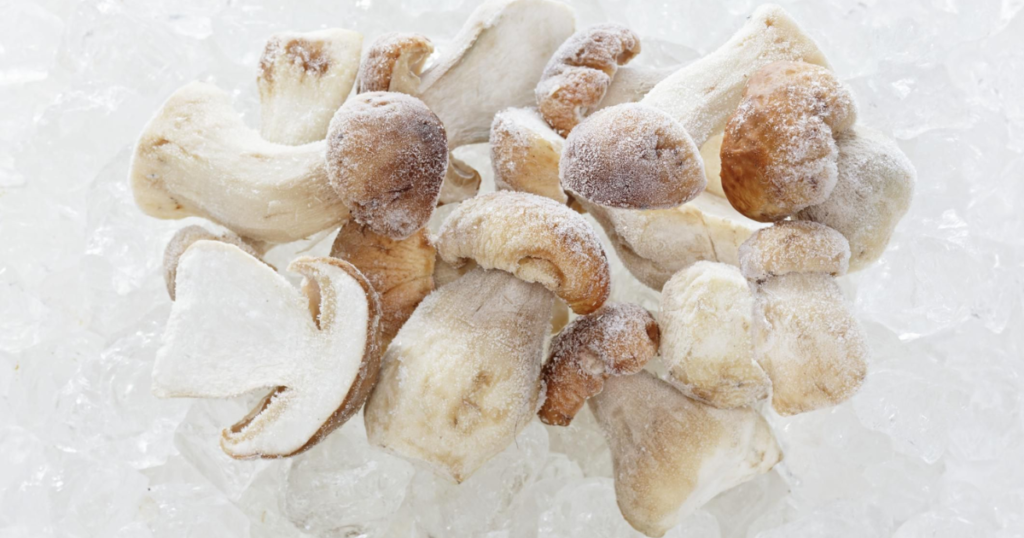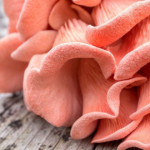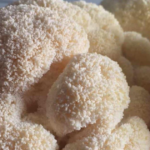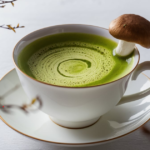Mushrooms are fungi that typically grow above ground and consist of a stem, cap, and gills or pores on the underside of the cap. They come in various species, some of which are edible and highly nutritious, while others can be toxic. Mushrooms play a crucial role in ecosystems by decomposing organic matter and recycling nutrients.
Mushrooms, often overlooked as mere culinary ingredients, hold secrets that extend far beyond the kitchen. These fascinating fungi are nature’s recyclers, transforming decaying matter into vital nutrients that sustain entire ecosystems. With a diversity that spans from delicious delicacies to deadly poisons, mushrooms are as mysterious as they are essential. Imagine unlocking the hidden health benefits and ecological wonders packed within each cap and stem.
Mushrooms are a powerhouse of nutrition, packed with vitamins, minerals, and antioxidants that boost immune health and combat inflammation. Some species, like Shiitake and Reishi, have been used in traditional medicine for centuries due to their potent therapeutic properties. Beyond health benefits, mushrooms play a critical role in the environment by breaking down complex organic materials, enriching soil, and supporting plant growth. Their unique ability to absorb heavy metals and pollutants makes them valuable in bioremediation efforts.
What Are Freezing Mushrooms?
Freezing mushrooms is a fantastic way to extend their shelf life and ensure you have these versatile ingredients on hand for various dishes. Whether you’re a seasoned chef or a home cook, understanding the best methods for freezing mushrooms can help you save money, reduce waste, and enhance your culinary creations. This article will explore the benefits of freezing mushrooms, the different types of mushrooms, and step-by-step instructions for freezing them effectively.
Benefits of Freezing Mushrooms
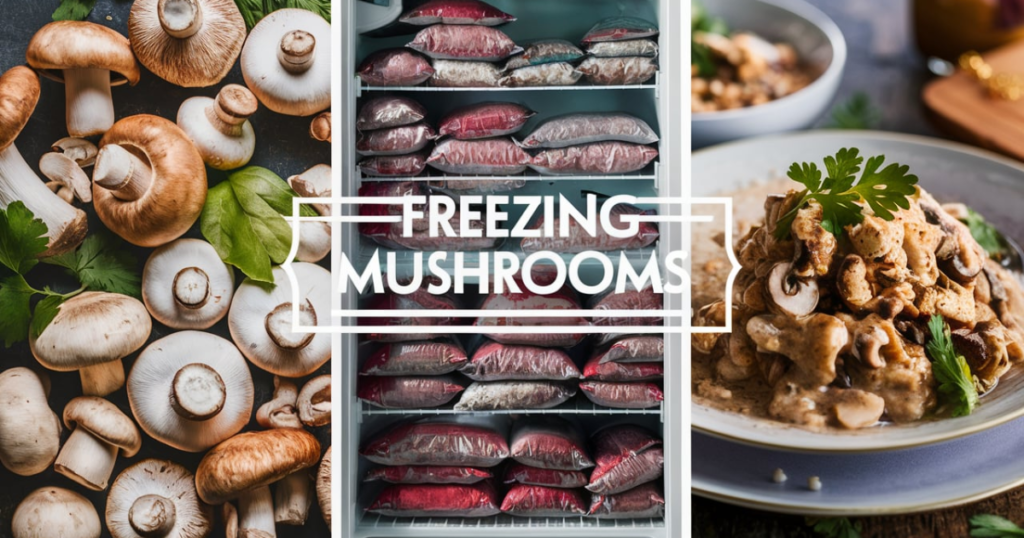
Convenience and Accessibility
Freezing mushrooms allows you to have a readily available supply without the constant need to purchase fresh ones. This convenience is particularly beneficial for those who love cooking with mushrooms but may not have time to shop frequently.
Cost-Effective
Mushrooms can be expensive, especially when out of season. By buying them in bulk when they’re more affordable and freezing them, you can save money in the long run. This approach also helps reduce food waste, as you can freeze mushrooms before they spoil.
Nutritional Preservation
Freezing preserves the nutritional content of mushrooms. They are rich in vitamins, minerals, antioxidants, and other beneficial compounds. Proper freezing methods can help maintain these nutrients, ensuring that you still get their health benefits even after months in the freezer.
Versatility in Cooking
Frozen mushrooms can be used in various recipes, from soups and stews to sautés and stir-fries. While they might not retain the exact texture of fresh mushrooms, they still impart great flavor and nutrition to your dishes.
Types of Mushrooms Suitable for Freezing
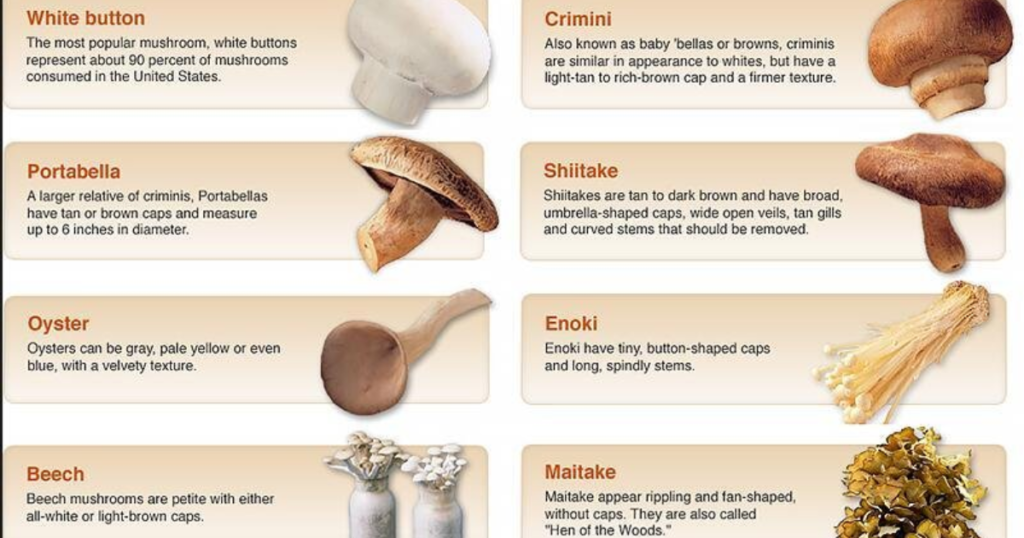
Different mushrooms have unique characteristics and freezing capabilities. Here are some common types and their suitability for freezing:
Button Mushrooms
Button mushrooms, also known as white mushrooms, are the most common variety. They freeze well and are versatile in many dishes. Their mild flavor and firm texture make them a great candidate for freezing.
Cremini Mushrooms
Cremini mushrooms, or baby bellas, are a bit denser and more flavorful than button mushrooms. They also freeze well and can be used similarly to button mushrooms in various recipes.
Portobello Mushrooms
Portobello mushrooms are larger and have a meaty texture, making them ideal for grilling and stuffing. They freeze well, but due to their size, it’s best to slice or chop them before freezing.
Shiitake Mushrooms
Shiitake mushrooms have a rich, earthy flavor and are commonly used in Asian cuisine. They can be frozen, but it’s important to note that their stems can become tough. Removing the stems before freezing is recommended.
Oyster Mushrooms
Oyster mushrooms have a delicate texture and mild flavor. They freeze well but may become slightly softer after thawing. They work well in soups and sauces where their texture is less critical.
How to Freeze Mushrooms: Step-by-Step Guide
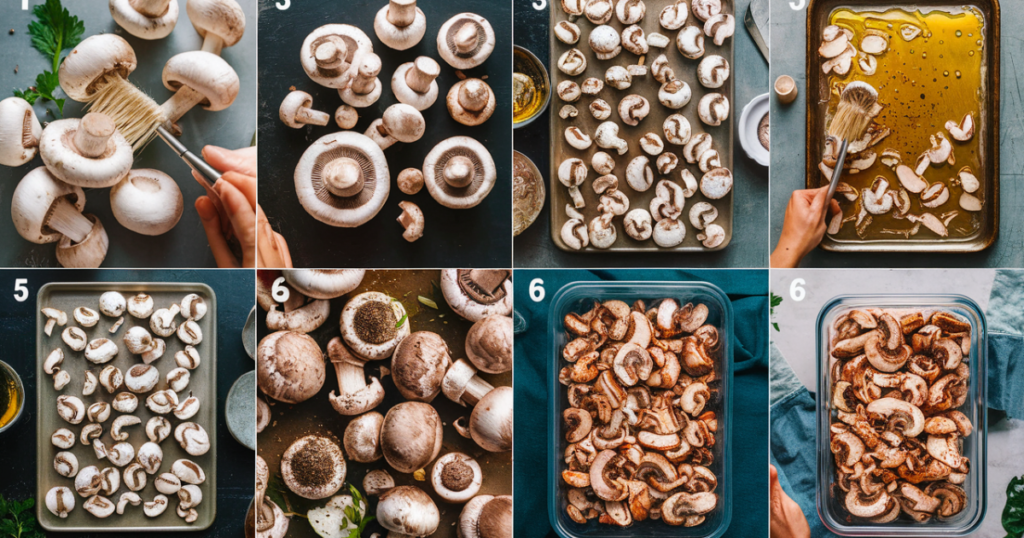
Step 1: Cleaning and Preparing
Choose Fresh Mushrooms: Select mushrooms that are firm, unblemished, and free from any signs of spoilage.
Clean Thoroughly: Gently wipe mushrooms with a damp cloth or paper towel to remove dirt. Avoid washing them under running water, as mushrooms can absorb water and become soggy.
Trim and Slice: Trim the ends of the stems and slice mushrooms to your desired thickness. For larger mushrooms like portobellos, remove the gills if desired.
Step 2: Blanching (Optional but Recommended)
Blanching helps preserve the texture and flavor of that. It’s particularly useful for mushrooms that you plan to use in cooked dishes.
Boil Water: Bring a pot of water to a boil and prepare a bowl of ice water.
Blanch Mushrooms: Add them to the boiling water and blanch for 1-2 minutes. The exact time depends on the size and type of mushroom.
Shock in Ice Water: Immediately transfer the blanched mushrooms to the ice water to stop the cooking process. Let them cool completely.
Drain and Dry: Drain that and pat them dry with a clean towel to remove excess moisture.
Step 3: Flash Freezing
Arrange on a Baking Sheet: Spread the mushrooms in a single layer on a baking sheet, ensuring they don’t touch each other. This prevents them from sticking together during freezing.
Freeze: Place the baking sheet in the freezer and freeze the mushrooms for 1-2 hours or until they are solid.
Step 4: Storing
Transfer to Containers: Once frozen, transfer the mushrooms to airtight containers or freezer bags. Label the containers with the date and type of mushroom.
Seal and Store: Seal the containers tightly and store them in the freezer. It can last up to 12 months if properly stored.
Read More:
Are Mushrooms Good For You
Tips for Using Frozen Mushrooms
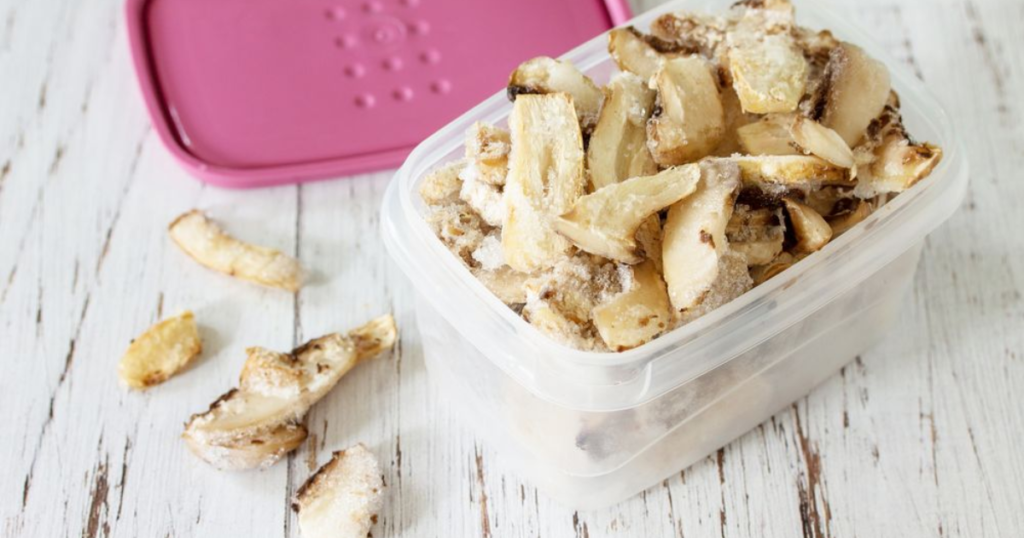
Thawing
For most recipes, you don’t need to thaw frozen mushrooms before cooking. Simply add them directly to your dish. If you prefer to thaw them, place them in the refrigerator overnight or use the defrost setting on your microwave.
Cooking
Frozen mushrooms release more water than fresh ones. When using them in recipes, consider cooking them separately to allow excess moisture to evaporate before adding them to your main dish. This step ensures your dishes don’t become too watery.
Recipes
Here are some ideas for using frozen mushrooms in your cooking:
Mushroom Soup: Frozen mushrooms work wonderfully in creamy mushroom soups, adding rich flavor and texture.
Stir-Fries: Add frozen mushrooms to your favorite stir-fry recipes for an easy and nutritious boost.
Pasta Sauces: Incorporate frozen mushrooms into pasta sauces for added depth and umami flavor.
Pizza Toppings: Use frozen mushrooms as a convenient pizza topping. Their flavor intensifies during baking.
Casseroles: Frozen mushrooms are great in casseroles, where their texture blends seamlessly with other ingredients.
Troubleshooting Common Issues
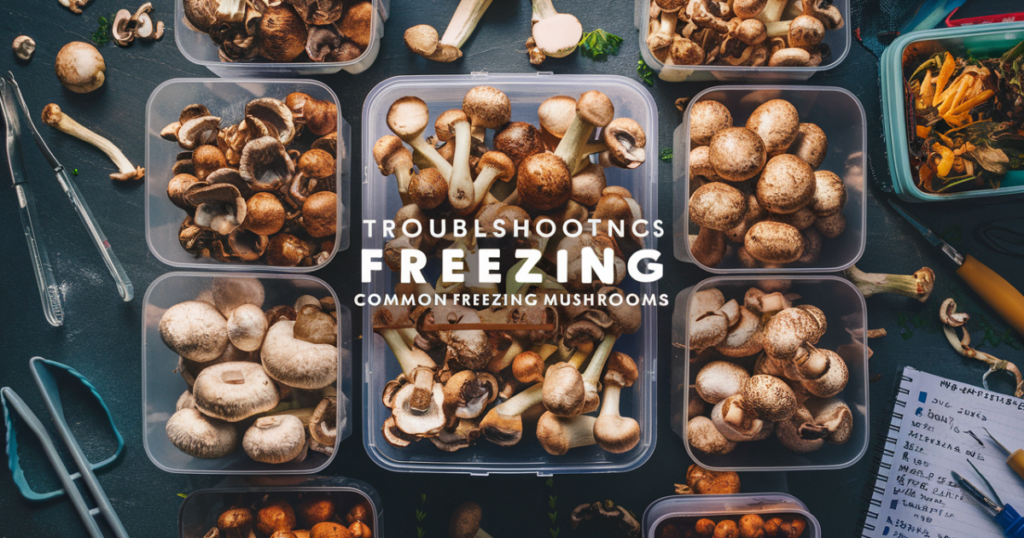
Texture Changes
Frozen mushrooms may become slightly softer after thawing. Blanching helps mitigate this issue, but if texture is crucial, consider using frozen mushrooms in cooked dishes where it matters less.
Excess Moisture
Frozen mushrooms can release excess water during cooking. To avoid this, cook them separately before adding them to your main dish. This step helps evaporate the moisture and concentrates their flavor.
Freezer Burn
To prevent freezer burn, ensure mushrooms are properly sealed in airtight containers or freezer bags. Removing as much air as possible before sealing helps maintain their quality.
FAQs
Can you freeze mushrooms without blanching them first?
Yes, you can freeze it without blanching, but blanching helps preserve their texture and flavor better. If you skip blanching, expect a softer texture upon thawing.
How long can frozen mushrooms be stored in the freezer?
Frozen mushrooms can be stored for up to 12 months if properly sealed in airtight containers or freezer bags. Be sure to label them with the date to track their storage time.
Can you freeze cooked mushrooms?
Yes, cooked mushrooms can be frozen and stored for future use. Ensure they are cooled completely before transferring to airtight containers or freezer bags for freezing.
Do frozen mushrooms need to be thawed before cooking?
Generally, you don’t need to thaw frozen mushrooms before cooking. You can add them directly to your dishes, though cooking separately can help evaporate excess moisture.
Will freezing affect the nutritional value of mushrooms?
Freezing mushrooms preserves most of their nutritional value, including vitamins, minerals, and antioxidants. Proper freezing methods help maintain these nutrients over time.
Conclusion
Freezing mushrooms is a practical and efficient way to ensure you always have this versatile ingredient ready for your culinary needs. By following the proper steps cleaning, optionally blanching, flash freezing, and storing in airtight containers you can maintain their flavor, texture, and nutritional value.
While frozen mushrooms may be slightly softer than fresh ones, they are still perfect for a wide range of dishes like soups, stir-fries, and sauces. The convenience of having mushrooms on hand, coupled with cost savings and reduced food waste, makes freezing an excellent option for any home cook or chef. With these techniques, you can enjoy the rich, earthy flavors and health benefits of mushrooms all year round.

